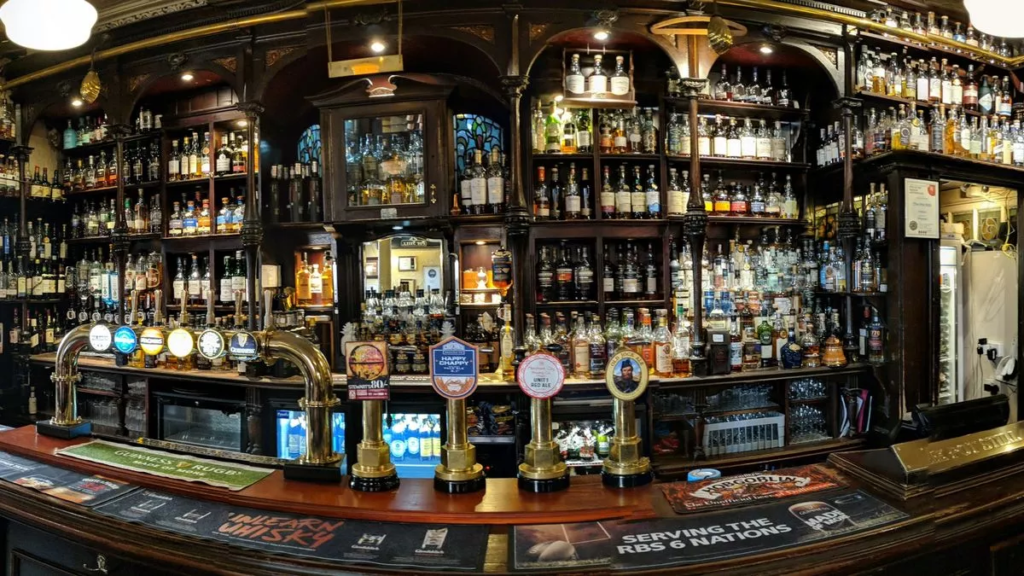
The 1960s was a decade of significant transformation across the United States, and Putnam County, New York, was no exception. As the country grappled with the civil rights movement, the rise of counterculture, and the effects of the post-war boom, local life in Putnam County found its rhythm through various social hubs, including the iconic putnam county ny bars 1960s and taverns that served as central meeting points. These establishments were more than just places to grab a drink; they were spaces where politics, local culture, music, and a wide range of personalities mixed in sometimes unexpected and fascinating ways.
The Setting: Putnam County in the 1960s
Putnam County, located in the Hudson Valley region of New York, is known for its picturesque landscapes, proximity to the city, and its rural charm. The 1960s in Putnam County were defined by a mix of the old and new. While many of the county’s towns maintained their rural, small-town feel, the growth of nearby New York City brought new energy and influences to the region. The bars in Putnam County were reflective of this mix of traditional values and new-age change. They served as gathering places for people from all walks of life—blue-collar workers, local farmers, weekend visitors from the city, and even the younger, rebellious crowd that began to shape the cultural landscape of the 1960s.
In the early part of the decade, Putnam County remained largely conservative and traditional. The majority of its residents were white, middle-class, and enjoyed a quieter, slower-paced lifestyle than their urban counterparts. However, the societal shifts of the time were beginning to have an impact. People’s expectations for freedom and self-expression grew, and these new ideas began to creep into places like the local bars. By the mid-to-late 1960s, Putnam County was becoming a more diverse and complex place, and its bars reflected this change.
The Role of Bars in Putnam County
Bars in the 1960s were more than just places to drink—they were social spaces where people could connect, unwind, and engage in the cultural shifts of the era. In Putnam County, many of the bars were family-owned, and the taverns were small, local affairs. They weren’t the bustling, neon-lit nightlife spots one might imagine in New York City, but they played an essential role in the social life of the community. These bars acted as a microcosm of the larger shifts taking place in the country.
For many, the local tavern was a place to gather with friends and neighbors after a long day of work. The bars were often the setting for heated political discussions, gossip, and music. The music scene in the 1960s, especially with the rise of folk, rock, and soul, began to seep into bars and taverns, altering their social dynamics. It was not unusual to hear people discussing the music revolution, the Vietnam War, or the changing role of women in society while enjoying a cold beer or a shot of whiskey.
The Character of Putnam County’s Bars in the 1960s

In the 1960s, the bars of Putnam County were often characterized by their intimate atmosphere. With a mix of locals and visitors, these taverns had an undeniable charm. The clientele varied widely, but there was often a sense of unity among patrons. These were places where you could expect to see familiar faces every week, catch up on local news, or even share a laugh with strangers. The conversation flowed freely, and the mood was often laid-back—though things could get heated over politics or sports.
The small-town nature of the bars in Putnam County meant that everyone knew everyone. People who had grown up together, worked together, and shared the same communities often congregated at their local tavern for a night out. For many, the bar was the heartbeat of the community. Many of these bars were simple establishments with wood-paneling, dark lighting, and wooden tables. Despite the simplicity, there was a certain charm about them, and the smell of freshly poured beer and whiskey hung in the air. The local establishments were often modest in size, and the bar owners tended to be well-known members of the community.
As the decade progressed, the bars of Putnam County became places where the effects of the cultural revolutions of the 1960s were increasingly felt. The emergence of new music genres like folk and rock, the influence of the civil rights movement, and the counterculture movement all made their way into these bars. It was a time of rebellion and change, and the atmosphere in the taverns began to reflect that.
Popular Bars in Putnam County During the 1960s
While many of the bars in Putnam County in the 1960s were locally owned and may not have made national headlines, several establishments became well-known spots where locals gathered to socialize, relax, and enjoy a drink. These bars became landmarks for social life in the county, each with its unique flavor and set of regulars. One popular venue was the infamous “Junction Tavern” located in the heart of the county. The tavern’s rustic charm and cozy atmosphere made it a favorite for those looking for a quiet place to chat or play a round of pool.
Another beloved spot was “Carter’s Pub” in Cold Spring. Known for its lively crowd and its involvement in local political discussions, Carter’s Pub became a central gathering place for many. The pub served as a focal point for conversations on national politics, reflecting the larger conversations happening across the country. Throughout the 1960s, it hosted some famous political figures and local leaders who came in to debate or discuss matters affecting the region.
The town of Carmel also had its fair share of bars. Local watering holes like “The Brookside Inn” and “The Old Mill Tavern” served as havens for those looking for a relaxed night out after a long day. These bars reflected the more traditional, suburban side of Putnam County, and the patrons there were often older, with a focus on community and family values. Yet, even in these seemingly more reserved places, the winds of change that swept the nation began to find their way into the conversation.
Cultural Shifts Reflected in the Bars

One of the most significant cultural shifts in the 1960s was the rise of the counterculture, which was reflected in the bars of Putnam County. As young people from the area began to embrace new ideas about freedom, civil rights, and individuality, the local bars became gathering places for expressing these newfound beliefs. Local bands began playing folk and rock music in the bars, and patrons started experimenting with new forms of self-expression. It wasn’t uncommon to see long-haired, tie-dye-wearing youth mingling with the older generations in the county’s bars. This marked a period of generational tension but also mutual learning and exchange.
The women’s liberation movement, the civil rights movement, and the increasing popularity of protests and demonstrations across the country were also discussed in these bars. Conversations around these issues often filled the air, with people passionately debating the impact of the changes on their local community. It was a time of great upheaval and transformation, and the bars in Putnam County reflected this turbulence. They were places of both celebration and conflict, where the clash of old and new ideals met face-to-face.
Conclusion: The Enduring Legacy of 1960s Bars in Putnam County
The bars of Putnam County in the 1960s were far more than simple drinking establishments. They were places where social norms were challenged, and new ideas were discussed. They were centers of community life, and the cultural shifts of the time left an indelible mark on these bars and the people who frequented them. Whether it was in the form of heated political debates or the embrace of new music and styles, the bars of Putnam County became symbols of the broader changes sweeping across the country. They provided a space for both old and new generations to meet, share ideas, and navigate the complexities of the rapidly changing world around them. Today, these bars remain an integral part of the historical fabric of Putnam County, serving as a reminder of a time when social change was a constant force—and how local spaces like bars helped shape those shifts.
